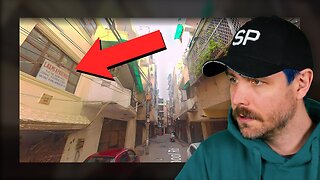Super Hero Suits || Smart Fabrics || Electronic Textiles
Smart fabrics are materials that have been engineered to have intelligent properties, such as sensing, actuation, and communication capabilities. These fabrics are made by integrating electronic components into the textile structure, allowing them to respond to external stimuli, such as changes in temperature, pressure, and light.
Some examples of smart fabrics include:
1. E-textiles: These are fabrics that contain embedded electronic components, such as sensors and conductive fibers, that can detect and respond to environmental changes.
2. Shape-memory fabrics: These fabrics are designed to change shape in response to temperature changes, making them useful for applications such as self-fitting clothing.
3. Thermal fabrics: These fabrics are designed to regulate temperature by either retaining or releasing heat, making them useful for applications such as insulated clothing.
4. Conductive fabrics: These fabrics contain conductive materials, such as metal wires or conductive polymers, that can be used for a range of applications, including wearable electronics, smart home automation, and medical devices.
Smart fabrics have the potential to revolutionize a range of industries, including fashion, healthcare, and sports. They can be used to develop innovative products that are more comfortable, efficient, and sustainable, leading to a better quality of life for people around the world.
#smartfabrics #nanotech #smarttextiles #textiles #superherosuits
-
 25:34
25:34
Stephen Gardner
2 hours ago🔥Trump MUST BE KEPT ALIVE at all costs! | Exclusive RFK JR Interview!!
23.3K66 -
 53:31
53:31
Standpoint with Gabe Groisman
9 hours agoEp 50. God is Real! with Academy Award-winning actor John Voight
63.2K47 -
 35:04
35:04
Power Slap
7 days agoPower Slap: Road to the Title - Season 3 Episode 9 - Bring Out That Monster
753K101 -
 15:52
15:52
Scammer Payback
1 month agoScammers Located in this Apartment
114K58 -
 10:41
10:41
Breaking Points
3 days agoARSON, 'FREAK OFFS', LUBE: Diddy Indictment SHOCKING DETAILS
71.1K35 -
 45:44
45:44
hickok45
12 hours agoSunday Shoot-a-Round # 247
42.9K50 -
 3:34
3:34
Cooking with Gruel
1 day agoBrown Butter Deviled Eggs
45.8K10 -
 11:06
11:06
Bearing
8 hours agoThe Office 2024 Australian Reboot Looks GARBAGE
43.7K16 -
 28:21
28:21
Lloyd And Mandy
12 hours agoThe INCREDIBLE Hack Every Online Business Owner MUST KNOW In 2024..
49.5K3 -
 0:51
0:51
scoutthedoggie
1 day agoWhat's in your Northeast UZI Rob?
42.6K2